THE TWELVE CAESARS
ACTA ACCLA, April 2006
NERO
Emperor 54 - 68 CE
Text by Hugh Kramer
The name of Nero, fifth in the line of the emperors of Rome, is one to conjure with. For those of us who were first introduced to him through the lens of a Hollywood camera, he was a dangerous, self-indulgent buffoon whom absolute power had so thoroughly corrupted, he could use the backdrop of a burning city as the stage for an impromptu concert. To the early Christians, against whom he instituted the first persecution, he was the Anti-Christ, the Beast from the Book of Revelations. The Roman mob loved him for his entertaining antics; and so missed him after his death that reports he had been sighted alive in the provinces caused great excitement in much the same way as sightings of the late Elvis Presley have in more recent times.
The Senate, on the other hand, mistrusted and despised him. This was partly because his theatrical and musical appearances were an embarrassment to their dignity and partly because he paid so little attention to their advice. Later, when Nero's extravagances had emptied the treasury and he began taking their lives and property through spurious treason trials, fear was added to the mixture.
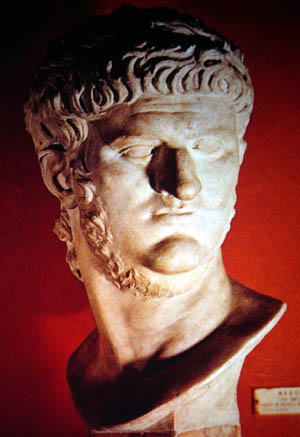
Emperor Nero
Born to the ancient and noble family of the Ahenobarbi in 37 CE, he was originally named Lucius Domitius Ahenobarbus. Through his mother Agrippina, he was related to the imperial dynasty that had begun with Julius Caesar. Nero's early youth was not easy. At the age of two his mother was banished by the emperor Caligula (37 - 41 CE) and, when his father died one year later, his inheritance was seized as well.
The boy’s fortunes began to change when Caligula died and Claudius (41 - 54 CE) became emperor. Claudius brought Nero's mother back from exile and, despite the fact that she was Claudius' own niece, married her. Though Claudius already had children of his own, Britannicus and Octavia, he was persuaded to adopt Agrippina's son as well and the boy was renamed Nero Claudius Drusus Germanicus. At the same time he was betrothed to his adopted sister, Octavia.
When Claudius, possibly helped along by a dish of poisoned mushrooms, died in 54 CE, Agrippina managed, with the support of Burrus, commander of the Praetorian Guard, to have the claims of Claudius' natural son Britannicus, set aside in favor of her own child, Nero. Thus, at the tender age of seventeen, Nero became sole ruler of the Roman Empire.
At first, the government was run mostly by the praetorian prefect Burrus and Nero’s tutor, the philosopher Seneca. They controlled the young emperor by catering to his baser impulses and letting him exhaust himself in excess and debauchery. But, when Burrus died in 62 CE and was replaced as prefect by the unscrupulous Tigellinus, Seneca lost all influence over his former pupil and soon retired from the scene.
Though the government was well run for the first few years of Nero’s reign, his personal life was another matter. His 14-year-old stepbrother and possible rival, Britannicus was poisoned during dinner in 55 CE. As the child lay convulsing in agony, the young emperor claimed it was nothing to worry about. The boy was epileptic and this was just a fit. Britannicus was quietly buried the next day.
Next to fall was Agrippina, Nero’s mother. Her attempts to influence government annoyed him. Her jealousy of his affair with the fashionable beauty Poppaea (then the wife or mistress of the future emperor Otho) and her loud complaints of filial ingratitude to all and sundry, alarmed him. He determined that she had to go.
The historian Tacitus gives a perhaps fanciful, but none the less compelling, story of what happened next. Pretending he wanted reconciliation, Nero invited his mother to visit him at the resort of Baiae. With tearful embraces and protestations of love, he provided a sumptuous dinner and later presented her with a beautifully appointed ship to take her back to her home in Antium that evening. The ship, however, was rigged to collapse while out at sea and throw his mother into the water to drown. Unfortunately for Nero’s plans, Agrippina was a strong swimmer and managed to swim to shore. Making her way home, Agrippina decided her best course was to pretend ignorance of the attempt on her life and she sent word to her son that, by the grace of the gods, she had been saved from a terrible accident.
When Nero received this news, he was panic-stricken. Would his mother tell the truth to anyone and, perhaps, rouse the population against him? To forestall this possibility, Nero sent assassins to his mother’s house. When they burst into her room with their swords drawn, Agrippina tore open her dress and, pointing to her womb, cried “Strike here!” She fell beneath the flashing swords.
With his mother out of the way, there were no more voices of conscience left that could restrain him. At the behest of his mistress Poppaea, Nero divorced his wife Octavia, daughter of the late emperor Claudius. He also banished her and later ordered her execution. He had her head presented on a platter as a gift for Poppaea, his new wife. Nero apparently loved her but Nero’s love was no guarantee of safety for anyone. A few years later he kicked the then pregnant Poppaea to death during an argument.
Some of Nero’s whims were merely scandalous instead of deadly. He raced chariots in public and appeared on stage to sing, accompanying himself on the lyre. Of course, criticizing Nero’s performance or even failing to pay attention to it could be hazardous to your health. The future emperor Vespasian (69-79 CE) nearly lost his life for nodding off during one of Nero’s poetry recitals.
When Nero traveled to Greece, he took part in all kinds of artistic and sporting competitions. He won first place for chariot racing at the Olympic Games despite the fact that he fell out of the chariot during the race. In fact, he won first place in every competition he participated in. After all, with the nearly fatal example of Vespasian in mind, no one dared award him anything less.
In 64 CE, a fire started in Rome near the Circus where it joined the Palatine and Caelian hills. The fire quickly spread through the wooden structure and the adjoining slums and eventually devastated most of the city. Nero, it is said, climbed to the top of a tower for the best view of the conflagration and sang of the destruction of Troy while accompanying himself on the lyre. The story that Nero fiddled while Rome burned comes from this but the fiddle had not been invented yet. To deflect rumors that the fire had been started on his orders, Nero blamed the deed on the small and unpopular sect of Christians. When, at the trial, more was learned of the nature of the sect, the charge of arson was changed to that of atheism (when you believe in only one god, you are an atheist where all the others are concerned). The Christians were condemned to death in various gruesome manners such as being tied to a pole, covered in pitch and then set alight to function as a human torch. Some think the Apostles Peter and Paul were martyred in this first persecution.
Whether or not Nero set the Great Fire of 64 CE, there is no doubt that he took full advantage of the opportunity it gave him for self-indulgence. Almost a third of the center of Rome was converted into a series of fabulous (and fabulously expensive) parks and palaces that became known collectively as the Golden House. When the huge complex was complete, he is said to have sighed, "Now at last I can live like a human being."
All of Nero’s projects and fancies were a severe drain on the national treasury and part of the way Nero gained the funds he needed was through the treason trial. Wealthy and prominent men were accused of conspiring against the emperor on all sorts of flimsy pretexts. When they were found guilty, their lives and most of their property were forfeit to the state. Eventually, the atmosphere of fear these trials engendered led to a real conspiracy centered on an attractive, though ineffectual, nobleman named Gaius Calpurnius Piso. Many were involved in this conspiracy and many died at Nero’s hands when an ex-slave of one of the conspirators betrayed it to him. Among the casualties were Nero’s old tutor Seneca and the poet Lucan.
While these events were occurring in the capital, things were happening in the provinces that would contribute to the instability and eventual collapse of Nero’s government. There were a series of wars in the east against the Parthians (the successors of the old Persian Empire) which, though they were eventually concluded successfully, were a great financial burden. There was also a disastrous rebellion in Britain in which the towns of Colchester, St Albans and London were destroyed. As many as 70,000 Romans may have been killed before it was crushed. In 67 CE, a revolt broke out in the province of Judaea in which Jerusalem and the second Jewish temple were destroyed.
The spark that signaled the beginning of the end of Nero’s reign was lit when the province of Gallia Lugdunensis (in what is today Northern France) rebelled because of the suffering caused by excessive taxation. When Galba, the highly regarded governor of Hither Spain, joined the rebellion, the handwriting was clearly on the wall. The Praetorian Guard declared it’s allegiance to Galba and the Senate declared Nero a Public Enemy. The emperor, abandoned by all but a few followers, fled to a villa a few miles south of Rome and there, with the help of a faithful freedman, stabbed himself in the throat. His last words were "Qualis artifex pereo" - "What an artist the world is losing in me".
Numismatically, the coinage of Nero reflects the history of the reign as well as the tastes and politics of the emperor. Early on, Nero’s mother appears on coins with him, but portrayals of her quickly disappear as their relationship grew more strained. Military successes such as the successful conclusion of the Parthian wars are commemorated on coins as well as Nero’s public projects like the rebuilding of the Temple of Vesta after the Great Fire or the completion of a new harbor at Ostia. There are also depictions of Apollo playing the lyre which are intended to flatter this aspect of the emperor’s own talent.
The most important aspect of Nero’s coinage though is his monetary reform of the precious metal issues in CE 64. The weight of the gold and silver coins were reduced and the latter also saw a reduction in purity. These measures were taken so that that the emperor, who always needed cash, could issue more coins with the same amount of metal. These measures were inflationary but the effects were small at first. Nero was the first emperor to debase the coinage this way but the temptation to do the same proved irresistible to many of his successors too. Also part of the reform was the issue of unprecedented numbers of bronze, copper and brass coins.
The provincial coinages of the empire followed the lead of Rome. The coinage of Egypt was particularly affected. Vast amounts of older silver coins were melted down and recoined in a more debased form. New large bronze coins were also introduced at this time. For the provincial issues, this reign proved as much of a watershed as it did for the imperial issues.
BIBLIOGRAPHY
1) The Annals of Imperial Rome by Tacitus. Michael Grant, translator. Penguin Classics, 1964.
2) The Twelve Caesars by Suetonius. Robert Graves, translator. Penguin Classics, 1989.
3) The Roman Emperors by Michael Grant. Barnes & Noble Books, 1997.
4) A History of Rome to AD 564 by Arthur Boak & William Sinnigen. McMillan Company, 1969.
5) Roman Coins and Their Values, Volume One by David Sear. Spink & Son, Ltd., 2000.
SUGGESTED WEB RESOURCES ON NERO
Nero on De Imperatoribus Romanis
Nero on Wikipedia
Suetonius, The Lives of the Caesars - The Life of Nero (English)
Suetonius, De Vita Caesarum - NERO (Latin)


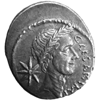 Julius Caesar
Julius Caesar Augustus
Augustus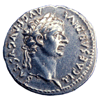 Tiberius
Tiberius Caligula
Caligula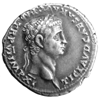 Claudius
Claudius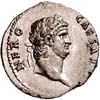 Nero
Nero Galba
Galba Otho
Otho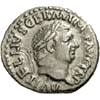 Vitellius
Vitellius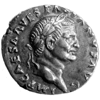 Vespasian
Vespasian Titus
Titus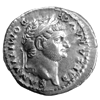 Domitian
Domitian

